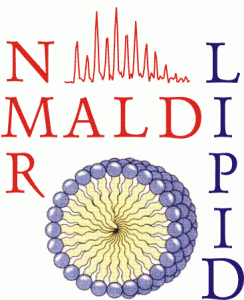Top
Instrumental Biomolecule Analysis
A biomolecule’s function is determined by its structure! For example, a certain enzyme will only be active if it meets the „right“ environmental conditions. Its structure, in turn, is largely determined by its chemical composition, particularly the amino acid sequence.
Our special interest is the characterization of lipids – in particular phospholipids. In this area, our contributions are very important for other groups of this Institute where phospholipids are the starting material used for further examinations, or complex lipid compounds are extracted during the processing of biological samples.
A further main focus of our research is the analysis of the collagen or glycosaminglycan content of the extracellular matrix. Apart from method aspects in the analysis of carbohydrates our main focus is on application aspects in the treatment of rheumatic diseases.
Research Techniques
MALDI-TOF MS
MALDI-TOF MS (matrix-assisted laser desorption & ionization time-of-flight mass spectrometry) is a modern mass spectrometric method. Unlike classical „electron impact“ (EI) MS, where the sample is ionized by electron bombardment, thus forming radical cations, „MALDI“ (like „electrospray“ (ESI)-MS, which was developed almost simultaneously) counts among the so-called „soft ionization“ methods. Both methods allow the analysis of low-volative and/or high-molecular biomolecules with a minimum of degradative reactions. Thus the molecular weights of the compounds to be examined can normally be easily determined.
Although this method was first mentioned in 1988 only, it has meanwhile experienced a meteoric rise in bio-sciences and in medicine.
Thin-Layer Chromatography (TLC)
By contrast to „conventional“ EI (electron impact) mass spectrometry, where radical cations are generated, the „Soft Ionization“ methods including MALDI-TOF MS result in the formation of „quasimolecular ions“. These are formed by cations (protons or alkali metal ions) attaching to the relevant molecule. Due to the fact that these will normally differ depending on their substance classification, there will be different ion yields for each molecule class. In extreme cases, in complex mixtures some molecules may not be detectable at all, or only with a negligibly low intensity. The sum of the individual spectra therefore normally does not correspond to the total spectrum!
High-Resolution 31P-NMR Spectroscopy
In principle, both MALDI-TOF mass spectra and Thin-Layer chromatograms can be evaluated quantitatively, which, however, is usually tedious. With MALDI mass spectra it is normally required to add a suitable reference substance – the number of „standards“ corresponding to the number of lipid classes to be evaluated (one per lipid class). On the one hand, this results in a massive alteration of the samples, and on the other hand some (at least basic) pre-knowledge of the unknown sample’s composition is required, as the standard signal is to be detected with a similar intensity as the components to be evaluated.
A quantitive evaluation of the thin-layer chromatograms is principally problematic, since the dye „Primuline“ which is used by us cannot yet be completely defined as to its binding characteristics to the lipid. According to the present state of the art the influences of both the lipid’s structure and its fatty acyl composition have to be evaluated in more detail.
A very convenient method is constituted by High Resolution 31P-NMR Spektroscopy: Here, almost all phospholipids can be spectroscopically separated from each other in a single experiment and can be quantitatively evaluated by using their integral intensities. This, however, requires that the aggregateion of the phospholipids be suppressed, as large aggregates are charaterized by broader resonances. This is achieved either by (a) organic solvent mixtures, or (b) by the selective addition of detergents. In our opinion, method (b) is to be preferred, since the spectra can be much better reproduced under these conditions and the actual lipid composition has a much smaller impact on the spectral qualities.
For a further article on the subject, click here.

